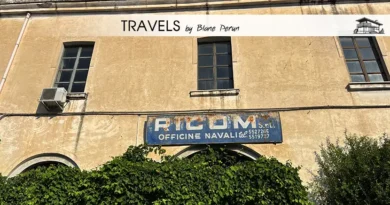Brasov Architecture & Interior Design
Exploring the Timeless Elegance of Brasov Architecture & Design
Nestled in the heart of Romania, Brasov is a city that captivates with its architectural charm and design elegance. The city’s buildings tell stories of a rich historical tapestry, blending Gothic, Baroque, and Renaissance influences into a unique urban landscape. Brasov Architecture & Design stands as a testament to the city’s ability to preserve its heritage while seamlessly integrating modernity, making it a fascinating subject for enthusiasts and professionals alike.

The Historical Foundations of Brasov’s Urban Aesthetic
The Gothic Grandeur of the Black Church
One of the most iconic symbols of Brasov’s architectural heritage is the Black Church (Biserica Neagră), a masterpiece of Gothic architecture. Constructed during the 14th and 15th centuries, this monumental structure is renowned for its impressive dimensions, intricate stone carvings, and a rich collection of medieval art. The church’s name, derived from the darkening of its walls following a great fire in 1689, adds a layer of historical intrigue to its already imposing presence. The Black Church embodies the Gothic architectural principles of verticality and light, with its towering spires and expansive stained glass windows creating a celestial atmosphere within its walls.
Renaissance Influences in Civic Buildings
Transitioning from the ecclesiastical to the civic, Brasov’s Renaissance architecture is prominently displayed in the Council Square (Piața Sfatului), surrounded by former merchant houses now repurposed into cafes and shops. The most notable building here is the Old Town Hall, dating back to the 15th century, which showcases the balance and proportion characteristic of Renaissance design. This period emphasized symmetry and the use of classical elements such as columns and pilasters, reflecting a revival of Ancient Roman architectural ideals. These structures not only served as the political and commercial heart of the city but also as a canvas for the expression of Renaissance artistic and architectural principles.
Contemporary Adaptations in the Heart of Transylvania
Modern Residential Architecture
Brasov’s residential architecture provides a glimpse into the modern adaptations of traditional design elements. New constructions often incorporate the pitched roofs and color palettes of historic homes, blending them with contemporary materials and technologies. This fusion creates a living environment that respects the past while accommodating the needs of modern living, such as energy efficiency and open-plan layouts. The integration of green spaces and communal areas in residential designs reflects a growing emphasis on sustainability and community well-being, aligning with global trends in urban development.
The Evolution of Public Spaces
In recent years, Brasov has seen a transformation in its public spaces, with a focus on accessibility, aesthetics, and social function. The renovation of Piata Sfatului and surrounding areas has revitalized the city center, making it more pedestrian-friendly and enhancing its role as a social hub. Innovative use of lighting, landscaping, and urban furniture has not only improved the functionality of these spaces but also highlighted the architectural beauty of the surrounding buildings. These interventions demonstrate a thoughtful approach to urban design that values both heritage and contemporary life.
The Future of Brasov’s Architectural Identity
As Brasov continues to evolve, the challenge for architects and urban planners is to maintain the delicate balance between preservation and innovation. The city’s architectural identity is deeply rooted in its history, yet there is a constant need to adapt to contemporary demands and technologies. Future developments in Brasov’s architecture and design will likely continue to draw inspiration from its rich past while incorporating sustainable practices and innovative design solutions to meet the needs of its residents and visitors.
In conclusion, Brasov Architecture & Design is a fascinating field that embodies the city’s historical depth, cultural diversity, and adaptive modernity. From the Gothic spires of the Black Church to the sleek lines of contemporary homes, the city’s architecture tells a story of resilience, beauty, and constant evolution.

FAQs on Brasov Architecture & Design
What makes Brasov’s architecture unique?
Brasov’s architecture is a blend of various styles, including Gothic, Baroque, and Renaissance, which reflects the city’s historical layers and cultural influences. The unique combination of these styles, along with the integration of modern design elements, gives Brasov a distinctive architectural character.
How has Brasov’s architecture evolved over the years?
Over the years, Brasov’s architecture has evolved by incorporating modern design principles while preserving its historical buildings. New constructions often draw inspiration from traditional designs but are adapted to meet contemporary needs, showcasing a harmonious blend of old and new.
Can you find modern architecture in Brasov?
Yes, Brasov is home to modern architectural developments that complement the city’s historical fabric. Contemporary residential buildings, public spaces, and commercial structures feature modern design elements, materials, and technologies, contributing to the city’s evolving architectural landscape.
How does Brasov’s architecture reflect its history?
Brasov’s architecture reflects its rich history through the preservation of buildings from various periods, each telling a part of the city’s story. Gothic churches, Renaissance civic buildings, and Baroque homes stand as testaments to the city’s past, while modern adaptations showcase its growth and resilience.
What role does sustainability play in Brasov’s architectural development?
Sustainability is becoming increasingly important in Brasov’s architectural development, with new projects focusing on energy efficiency, the use of sustainable materials, and the integration of green spaces. This approach not only respects the city’s natural environment but also enhances the quality of life for its residents.





